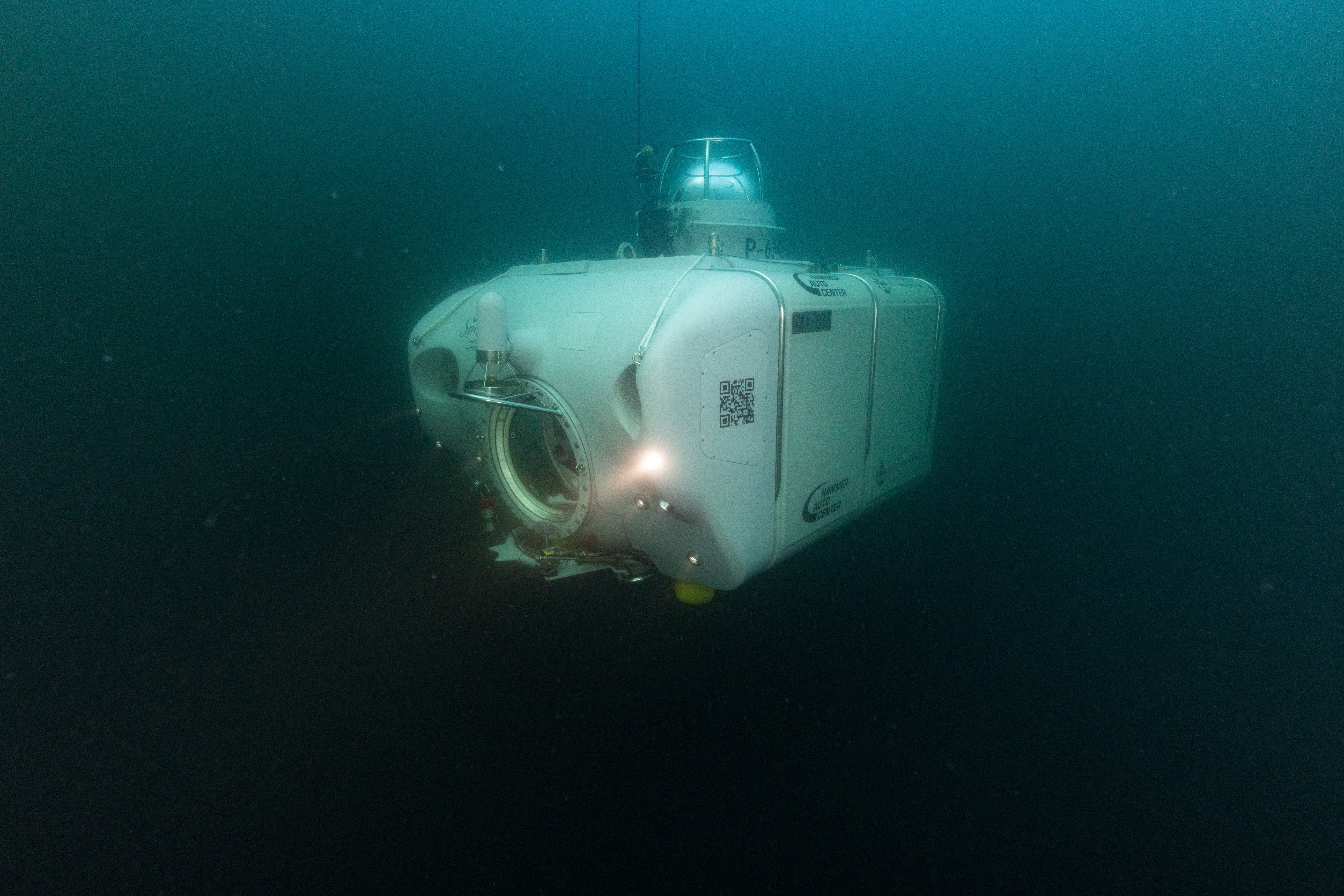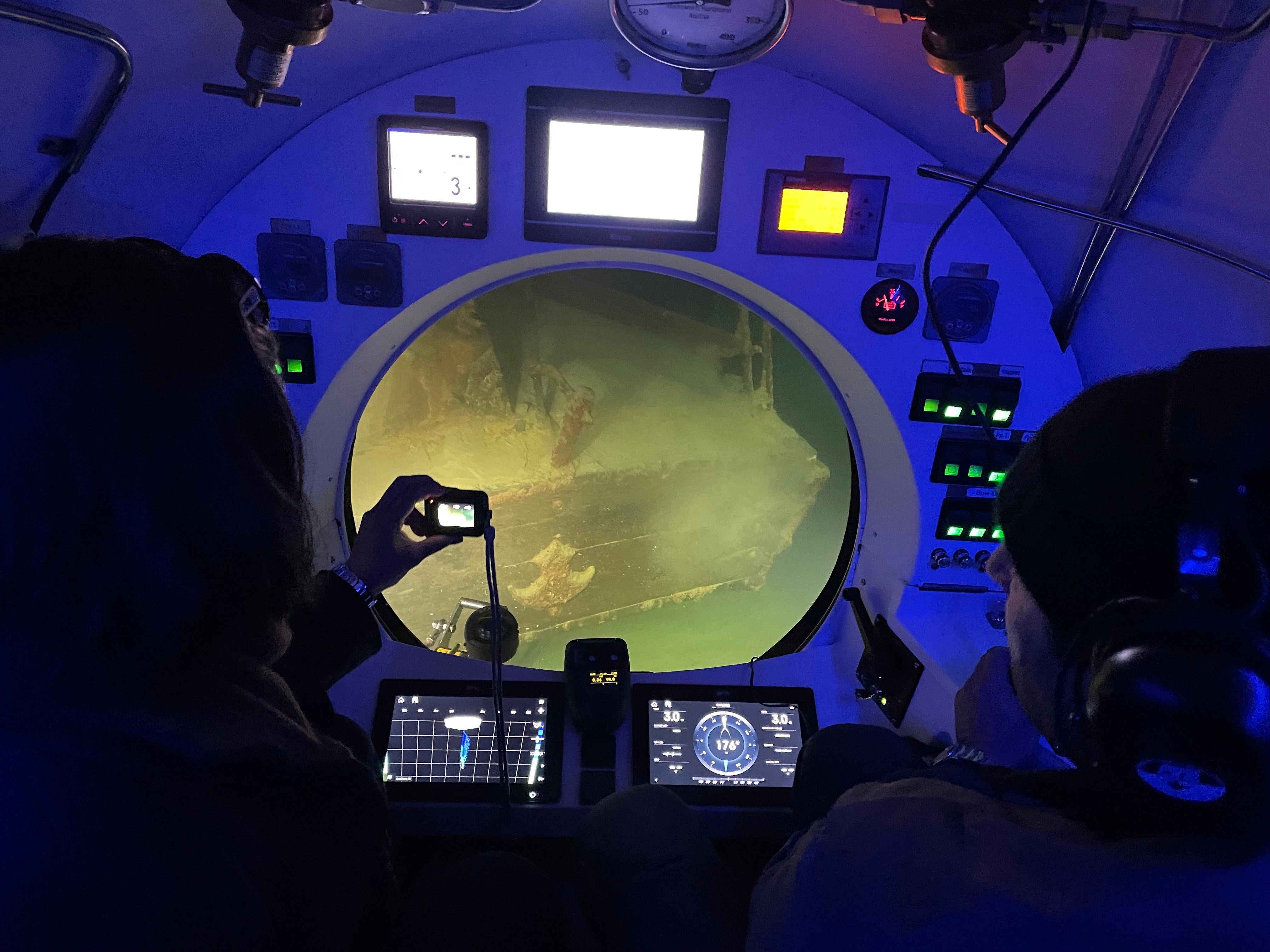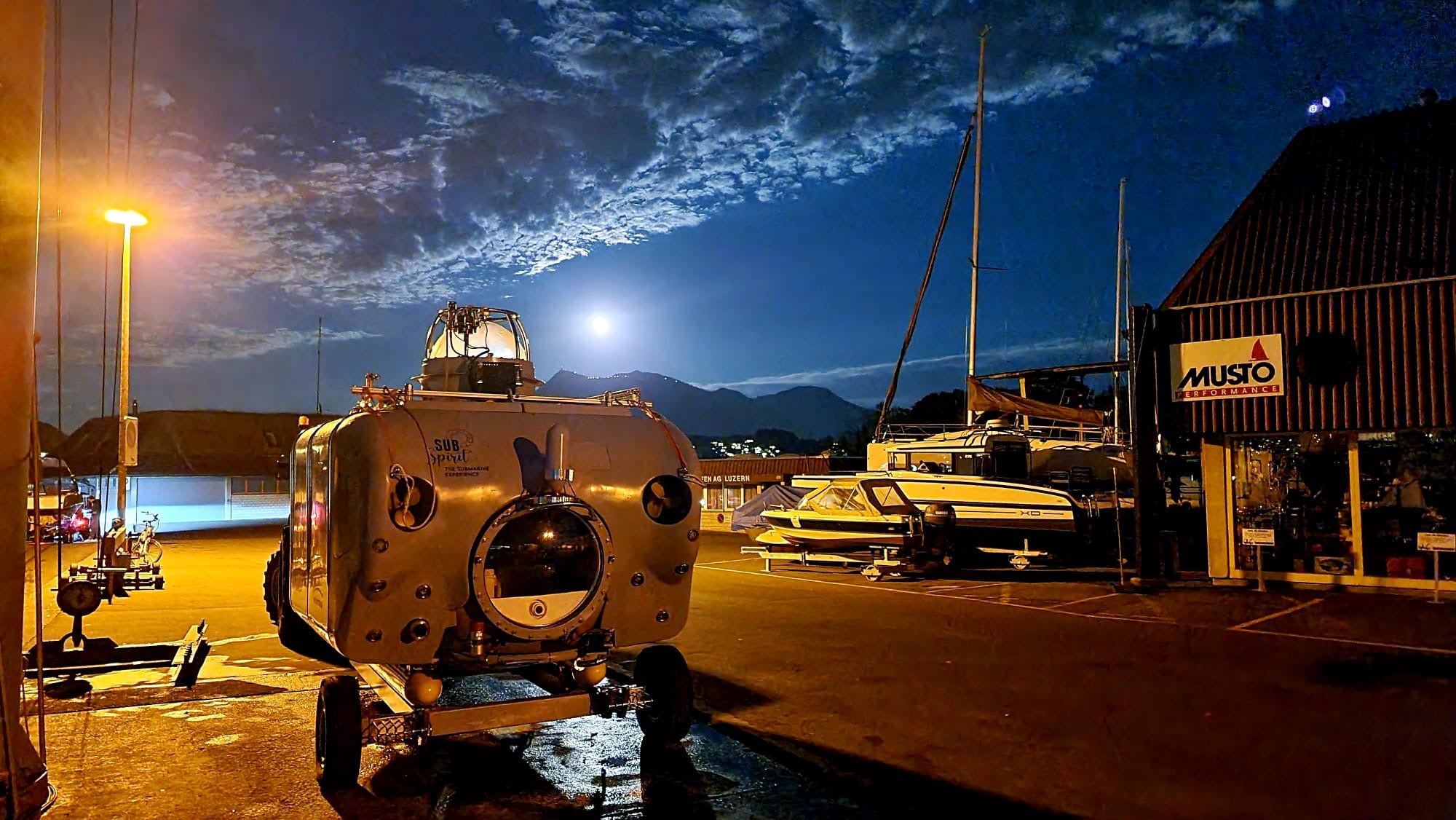
“Now it’s going to get dark. Very fast.”
The words echoed around the bug-eyed, Sputnik-like capsule as we descended into an afterworld of silence. The sensation – of snowy mountains fading away and sunlight draining from the scene, turning it into a grainy lithograph – set my pulse racing and soon our tiny craft was floating in slow motion in an out-of-focus softness, at minus-70m, near the bottom of one of the deepest lakes in Europe.
“You can start breathing again,” said the captain, as our untrained eyes peered out into the submerged land of half-invisible creatures. As if to show us how untethered we now were from real life, the pilot switched off the vessel’s four external electric motors and the cockpit’s internal lights, plunging our recalibrated world into darkness. Spooky doesn’t cover it.

Think of a submarine and your mind’s eye might picture a German naval U-boat, or a Red October-like typhoon class nuclear war machine. If you hide out in daydreams like me, then maybe the one that suggests itself is Nautilus, the pie-in-the-sky vessel skippered by Captain Nemo and magicked up by Jules Verne in Twenty Thousand Leagues Under the Sea. Or maybe it’s the equally fantastic, coupe-style, shark-proof submarine piloted by Herge’s Tintin.
What you wouldn’t think of is a Volkswagen Beetle-sized capsule, first built on Lake Constance in 1987 and refitted to the tune of 1 million Swiss Francs, and now used for perspective-altering passenger excursions on Lake Lucerne. But P-63 Subspirit, the brainchild of pilot and founder Philippe Epelbaum, is set to be the talk of Swiss tourism this summer. And, with a licence to dive to 300m with three passengers onboard (plus the capability to go 100m deeper, if necessary), it offers a completely strange journey into the unknown, in a world that is running short of wild, unpredictable adventures.
Our untrained eyes peered out into the submerged land of half-invisible creatures
“You could say this is similar to the submarine voyage at Disneyland, but we go a bit deeper,” said Epelbaum, jokingly, as the craft’s searchlight ominously scanned the blackness for shapes and shadows, perch and monster pike.
Our destination was the Motor-Naue Portland, a 47m-long ferry that came down with its captain in 1953 and one of many ghostly tombs preserved in ice-cold stasis on the lakebed. Among others at similar depths are a World War II Swiss army plane and Vitzanove, which sank 23 years ago during Cyclone Lothar, the worst windstorm to hit Europe in living memory.
But it is the Portland that turns Epelbaum feverish and, in such thrillingly alien territory, it’s the sort of thing that would get anyone’s heart pounding.

All of a sudden, outside the bullseye window, a murky silhouette quickly sharpened to reveal a miniature Titanic, all corroded iron railings and wheelhouse clogged with silt and sand. At nearly 50m, the shipwreck is the largest in the Alps and, cut off by distance, time, atmosphere and gravity, goes some way to explain why Epelbaum dedicated three years of his life to bringing P-63 Subspirit back to life. Discovery is screwed into his DNA.
“I feel the responsibility of adventure like ocean explorers Jacques Cousteau and James Cameron,” said the 59-year-old, a former technical and rescue diver. “If I didn’t feel this spirit at my age, then I wouldn’t have started such an ambitious project. Plus, this feeling is the closest I’ll ever get to being an astronaut.”
What is also gratifying for Epelbaum today is how he is now carrying the torch for the next generation of Swiss submariners. Oddly enough, there is a blueprint for deep-sea do-goodery of this kind in the landlocked country. Growing up in Stansstad, a port suburb of Lucerne from where Subspirit launches, Epelbaum dreamt of the heroic expeditions of Swiss oceanographic pioneer Jacques Piccard. The first man to reach the deepest point in the ocean, alongside American navy lieutenant Don Walsh, Piccard plunged 10,916m – nearly seven miles – beneath the surface of the western Pacific Ocean to where no human had gone before. You’ll know the spot better as the Mariana Trench.
This feeling is the closest I’ll ever get to being an astronaut
Among his other feats, Piccard constructed the world’s first tourist submarine to raise awareness of lake pollution. In 1964, he led 33,000 passengers beneath Lake Geneva and the submarine’s hull is now on display at the Swiss Museum of Transport in Lucerne. And, as if to pass the baton on, Piccard’s son Bertrand, the first to complete a non-stop balloon flight around the globe, joined Subspirit recently on one of their first deep dives. “He gave us the seal of approval,” added Epelbaum, as we hovered over the Portland like a gigantic drone.
I’d always thought of submarines as industrial and mechanically propelled, but Subspirit’s environmental credentials have been rigorously checked and it’s interior is clean and hospital-sterile. What the 6.5-tonne sub lacks in space or sci-fi gadgetry, it makes up for with ambient murmurs, the tight ping of the sonar and plenty of moments that might send a claustrophobe cuckoo. The reassurance is that survival time on board is factored to be 96 hours. Thankfully, there is also a dry toilet for emergencies.

The journey is surreal to the extreme, of course, but it also has a more essential purpose. As well as taking bucket-list chasers down into the depths of one of the world’s most astonishing lakes, Subspirit is effectively an environmental research satellite and aquatic classroom to educate passengers in limnology (the study of lakes) and, hopefully, encourage them to be more ecologically mindful in future.
The search for “the infinity”, as Epelbaum would have it, is more than just the thrill of sinking into the shadowy depths of a mirrored Alpine lake in a gigantic sardine can. It’s about stepping through the looking glass – the suck of the swell and the measure of the man – to explore a world so close, but one that remains so unknown and so misunderstood by so many.
Travel essentials
Getting there
Trying to fly less?
Take the Eurostar to Paris, before catching a high-speed train to Basel. Change for a train to Lucerne.
Fine with flying?
British Airways, easyJet and Swiss fly direct from the UK to Zurich. From there, catch a train to Lucerne.
More information
A submarine trip onboard Subspirit costs from CHF490pp. To book a trip, visit subspirit.ch.
For further information on accommodation and travel to Lucerne, visit luzern.com and myswitzerland.com.







